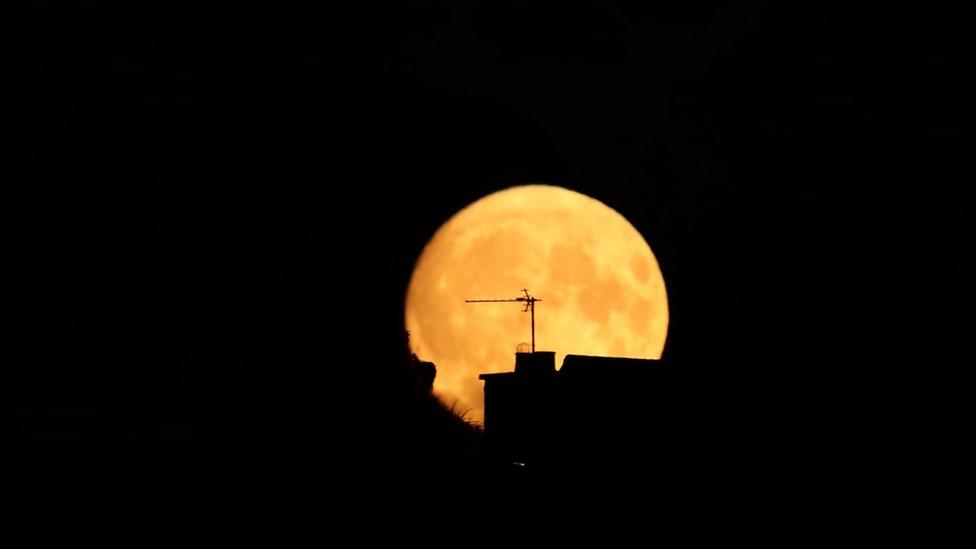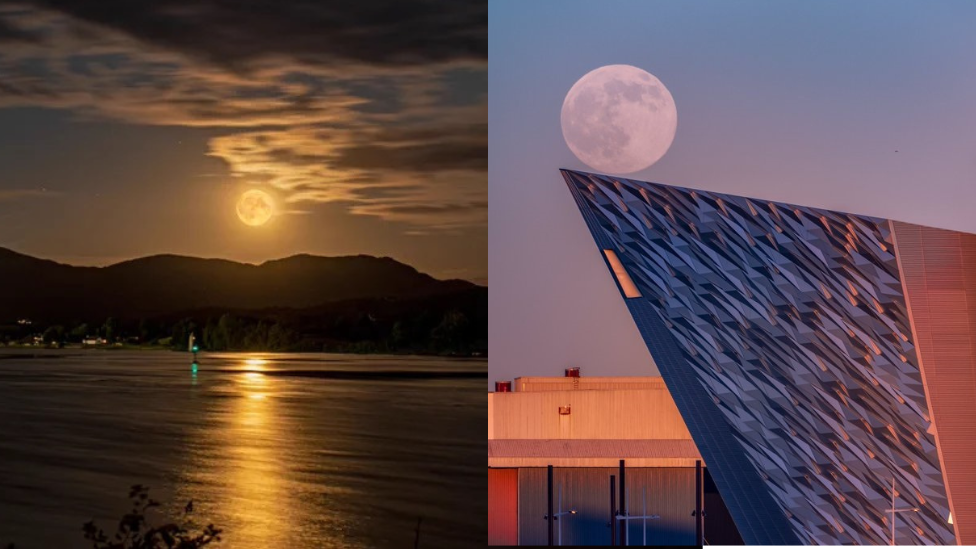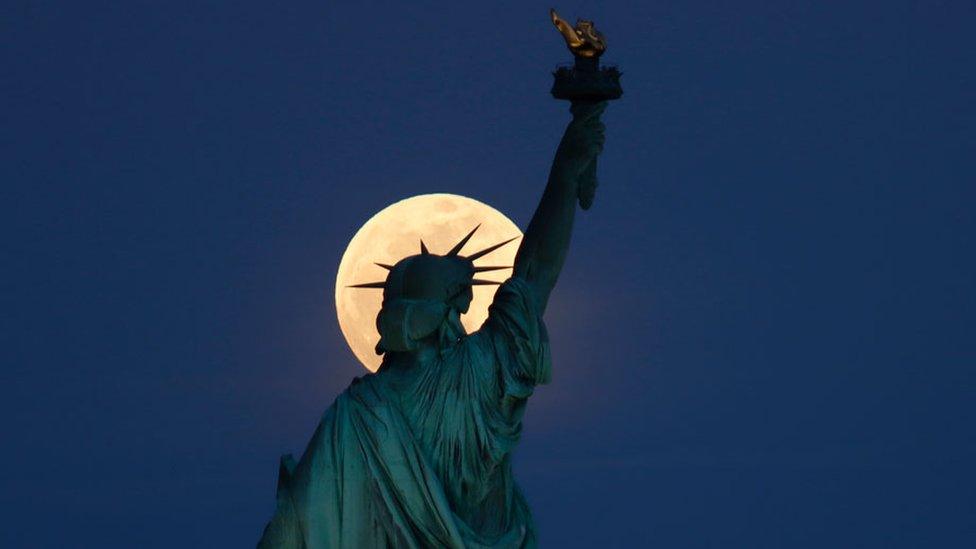Supermoon: NI Weather watchers look to the skies
- Published

A full Moon when the Moon is closest to the Earth appears larger and brighter than usual
While most years have 12 full Moons, 2023 will have 13 of these lunar events.
There are two supermoons in August - the full Sturgeon Moon which rises on the evening of 1 August and the full Blue Moon on 30 August.
The final supermoon in 2023 will rise on 29 September - the Harvest Moon.
The names are mostly English interpretations of Native American names; some are also Celtic, Anglo-Saxon, medieval English, or neo-pagan.
The names can have a spiritual meaning, such as the Sturgeon Moon, which is said to embody the final days of summer and signals the beginning of harvest season.
Some people believe the different phases of the Moon impact the behaviours of both people and animals - with some pet owners saying their dogs behave differently when there is a full Moon.
Of course, we need cloud-free skies to be able to see these celestial events - especially when the nights are still quite short.
Technically, the Sturgeon Moon rises on 1 August, but it will still look full for the following couple of nights.
Weather conditions will not be good for viewing on Tuesday night but should be better on Wednesday night into Thursday.

On Monday, Joe McNeill got lucky with this photograph taken during cloud gaps when the Sturgeon Moon was almost full cloud over Newry, County Down
Of course, we can always look ahead to the once-in-a-blue supermoon at the end of August, this year's extra full Blue Moon. This only occurs now and then (hence the name) and can have a blueish colour.
The final supermoon of 2023 will occur on 29 September. This will be the Harvest Moon which only occurs once every four years.
The other three years it comes in October and is then called Hunter's Moon as, traditionally, people in the Northern Hemisphere spent October preparing for the coming winter by hunting, slaughtering, and preserving meats, giving it its Anglo-Saxon name.
Weather watchers may recall the Buck Moon in July - it is named after the new antlers that emerge from a buck's forehead around that time of the year, as male deer or bucks shed their antlers and grow new ones every year.

Gerard McCreesh captured the Buck Moon in Warrenpoint and Stephen Henderson spotted the Wolf Moon above Belfast's Titanic Museum
Before that there was the Strawberry Moon in June which is thought to mark the beginning of a fruitful season, helping different cultures to celebrate the ripening of berries and the bountiful harvesting season ahead.
It is thought that January's full moon came to be known as the Wolf Moon because wolves were more likely to be heard howling at this time, maybe because they were hungry.
What causes a supermoon?
As the Moon orbits the Earth in an elliptical shape rather than in a circle, its distance to us varies over time.
A supermoon is a phenomenon that occurs when a full Moon takes place at the same time as the perigee - when the Moon is closest to the Earth.
A full Moon during perigee will appear 14% larger and 30% brighter than a full Moon during apogee - this is when the Moon is furthest away from Earth, an event known as a micromoon.
A supermoon is also about 7% larger and 15% brighter than the average full moon.
"The full Moon occurs at a very specific moment in time - down to the second - when the Moon is directly opposite the Sun in the sky," explains Dr Darren Baskill, an astronomer and astrophotographer based at the University of Sussex.
"But to our eyes, the Moon will look full, or almost full, for two or three days either side of the exact moment that the full Moon occurs."
Related topics
- Published4 July 2023
- Published27 April 2021
